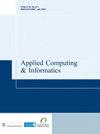A novel method for developing post-quantum cryptoschemes and a practical signature algorithm
IF 4.9
Q1 COMPUTER SCIENCE, INFORMATION SYSTEMS
引用次数: 2
Abstract
PurposeThe practical purpose of this research is to propose a candidate for post-quantum signature standard that is free of significant drawback of the finalists of the NIST world competition, which consists in the large size of the signature and the public key. The practical purpose is to propose a fundamentally new method for development of algebraic digital signature algorithms.Design/methodology/approachThe proposed method is distinguished by the use of two different finite commutative associative algebras as a single algebraic support of the digital signature scheme and setting two different verification equation for a single signature. A single public key is computed as the first and the second public keys, elements of which are computed exponentiating two different generators of cyclic groups in each of the algebras.FindingsAdditionally, a scalar multiplication by a private integer is performed as final step of calculation of every element of the public key. The same powers and the same scalar values are used to compute the first and the second public keys by the same mathematic formulas. Due to such design, the said generators are kept in secret, providing resistance to quantum attacks. Two new finite commutative associative algebras, multiplicative group of which possesses four-dimensional cyclicity, have been proposed as a suitable algebraic support.Originality/valueThe introduced method is novel and includes new techniques for designing algebraic signature schemes that resist quantum attacks. On its base, a new practical post-quantum signature scheme with relatively small size of signature and public key is developed.一种开发后量子密码方案的新方法和实用的签名算法
目的本研究的实际目的是提出一种后量子签名标准的候选标准,该标准不存在NIST世界竞争决赛选手的显著缺点,即签名和公钥的尺寸较大。实际目的是为代数数字签名算法的发展提出一种全新的方法。设计/方法论/方法所提出的方法的区别在于使用两个不同的有限交换结合代数作为数字签名方案的单一代数支持,并为单一签名设置两个不同验证方程。单个公钥被计算为第一公钥和第二公钥,其中的元素是通过对每个代数中循环群的两个不同生成器进行幂运算来计算的。Findings此外,作为公钥的每个元素计算的最后一步,执行与私有整数的标量乘法。通过相同的数学公式,使用相同的幂和相同的标量值来计算第一和第二公钥。由于这种设计,上述发生器是保密的,可以抵抗量子攻击。提出了两个新的有限交换结合代数,其乘法群具有四维环性,作为合适的代数支持。独创性/价值引入的方法是新颖的,包括设计抵抗量子攻击的代数签名方案的新技术。在此基础上,提出了一种新的实用的后量子签名方案,该方案具有相对较小的签名大小和公钥。
本文章由计算机程序翻译,如有差异,请以英文原文为准。
求助全文
约1分钟内获得全文
求助全文
来源期刊

Applied Computing and Informatics
Computer Science-Information Systems
CiteScore
12.20
自引率
0.00%
发文量
0
审稿时长
39 weeks
期刊介绍:
Applied Computing and Informatics aims to be timely in disseminating leading-edge knowledge to researchers, practitioners and academics whose interest is in the latest developments in applied computing and information systems concepts, strategies, practices, tools and technologies. In particular, the journal encourages research studies that have significant contributions to make to the continuous development and improvement of IT practices in the Kingdom of Saudi Arabia and other countries. By doing so, the journal attempts to bridge the gap between the academic and industrial community, and therefore, welcomes theoretically grounded, methodologically sound research studies that address various IT-related problems and innovations of an applied nature. The journal will serve as a forum for practitioners, researchers, managers and IT policy makers to share their knowledge and experience in the design, development, implementation, management and evaluation of various IT applications. Contributions may deal with, but are not limited to: • Internet and E-Commerce Architecture, Infrastructure, Models, Deployment Strategies and Methodologies. • E-Business and E-Government Adoption. • Mobile Commerce and their Applications. • Applied Telecommunication Networks. • Software Engineering Approaches, Methodologies, Techniques, and Tools. • Applied Data Mining and Warehousing. • Information Strategic Planning and Recourse Management. • Applied Wireless Computing. • Enterprise Resource Planning Systems. • IT Education. • Societal, Cultural, and Ethical Issues of IT. • Policy, Legal and Global Issues of IT. • Enterprise Database Technology.
 求助内容:
求助内容: 应助结果提醒方式:
应助结果提醒方式:


